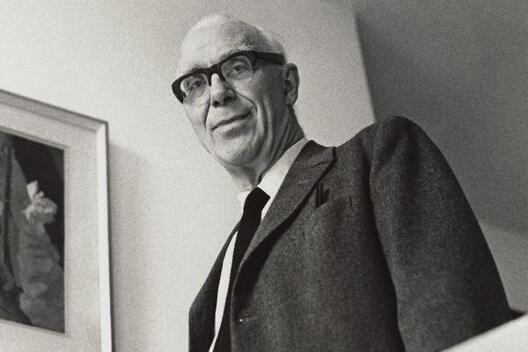Ove Arup was born in Newcastle upon Tyne on 16th April 1895. His father was Danish and mother Norwegian, and Arup was sent to boarding school in Denmark. After studying philosophy (an important influence on his later work) and then engineering, Arup worked for the Danish firm Christiani & Nielsen, first in Germany then Britain. In Britain he met the architect Berthold Lubetkin, and they would form a fruitful, but not always harmonious, working relationship. Together they would realise a swathe of modernist projects; the Penguin Pool at London Zoo, the Highpoint Flats in Highgate, Finsbury Health Centre and the Spa Green and Priory Green estates in Finsbury.
Post World War II, (during which Arup helped design many defence structures), the partnership of Ove Arup & Partners was formed. Until 1963, when Arup Associates was formed, the partnership helped engineered the construction of some of the most famous post war buildings; Hunstanton School by the Smithsons, Coventry Cathedral by Basil Spence, the Royal College of Physicians by Denys Lasdun and of course Sydney Opera House by Jorn Utzon.
With the formation of Arup Associates, the firm brought together engineers, architects and quantity surveyors under one roof (a move opposed by many contemporary architects). With designers such as Philip Dowson and Frances Pym, Arup Associates would continue to both design and engineer some of the most famous buildings of the 20th century, including the Barbican Estate, the Lloyds Building and 30 St Mary Axe (aka the Gherkin). Ove Arup retired in 1970 after being knighted for his services to engineering and died in 1988 in London.
Buildings: Bush Lane House, No.1 Finsbury Ave, Smithfield Market, Vauxhall Bus Station
Post World War II, (during which Arup helped design many defence structures), the partnership of Ove Arup & Partners was formed. Until 1963, when Arup Associates was formed, the partnership helped engineered the construction of some of the most famous post war buildings; Hunstanton School by the Smithsons, Coventry Cathedral by Basil Spence, the Royal College of Physicians by Denys Lasdun and of course Sydney Opera House by Jorn Utzon.
With the formation of Arup Associates, the firm brought together engineers, architects and quantity surveyors under one roof (a move opposed by many contemporary architects). With designers such as Philip Dowson and Frances Pym, Arup Associates would continue to both design and engineer some of the most famous buildings of the 20th century, including the Barbican Estate, the Lloyds Building and 30 St Mary Axe (aka the Gherkin). Ove Arup retired in 1970 after being knighted for his services to engineering and died in 1988 in London.
Buildings: Bush Lane House, No.1 Finsbury Ave, Smithfield Market, Vauxhall Bus Station

